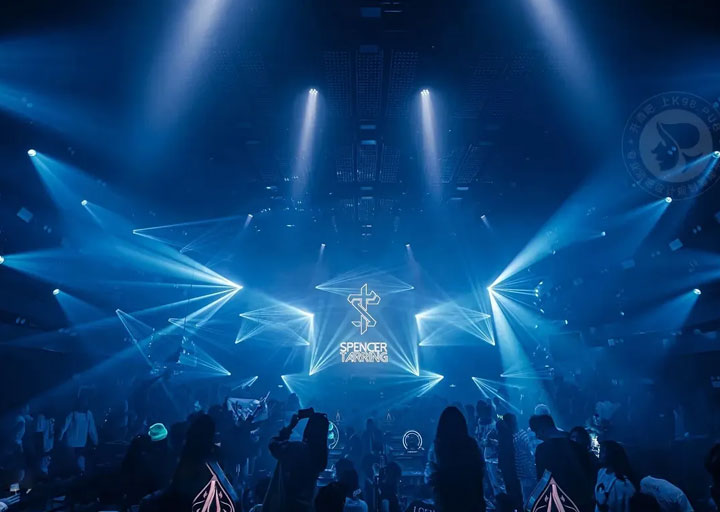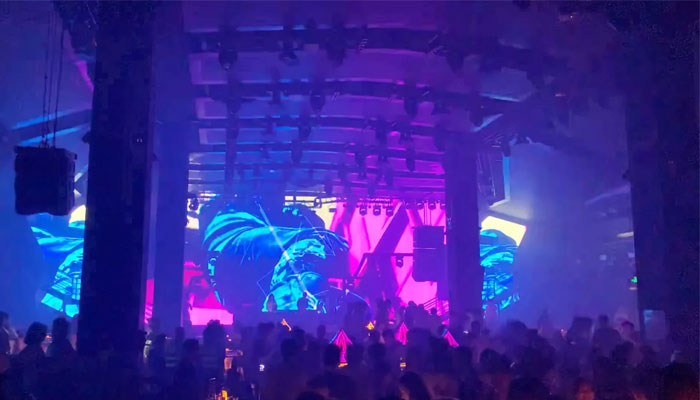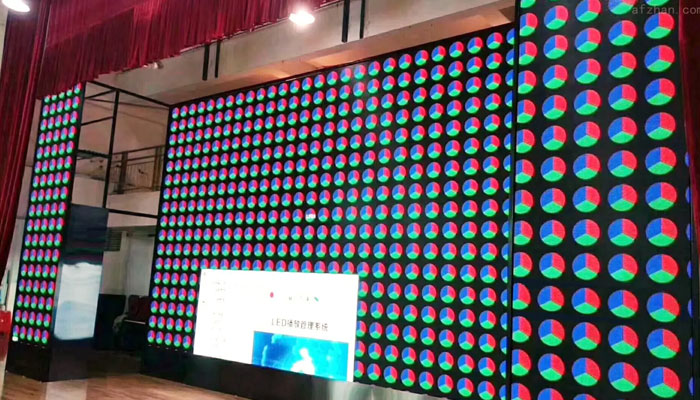During the Mid-Autumn Festival, an old American customer wanted to make a 20-square-meter bar LED display, but he didn’t know which model to choose. Therefore, we specially wrote this article on how to choose a model.
The relationship between LED display resolution and pixel density
The resolution of the LED display is similar to the resolution of a computer screen. The resolution of the LED display is also an important indicator of the clarity of the displayed content, and it is also the number of vertical and horizontal dimensions in pixels. But different from computer screens, LED electronic screen resolution refers to its physical resolution, that is to say, the number of physical pixels. Once the hardware is completed, the resolution cannot be changed.

So, what is the appropriate resolution? Since the full-color LED display is a customized product, that is, the size of each LED display may be different, so the same model of electronic screen products will have different resolutions for the entire screen because of the size of the area.
For example, if an electronic screen with a unit length (usually 1 meter as a unit) is 100 dots, if it is 5 meters wide and 2 meters high, the resolution is 500200, and the resolution of the entire screen with 1 meter wide and 1 meter high is 100100.
This kind of expression is not clear enough. In order to better express the resolution, another way of expression-pixel density is introduced.
The pixel density of a full-color LED display is the number of pixels per unit area (usually 1 square meter), such as the common 10,000 dots/square meter, 40,000 dots/square meter, etc. The higher the density, the more LED lights needed per unit area, the higher the price, and of course the higher the definition.

So, for example, how are 10,000 points per square meter arranged? Conventional full-color electronic screens use an even distribution method, that is, in the horizontal and vertical directions, a group of LED lights (one pixel) are distributed every 10mm. For 40,000 dots/square meter, there is a group of LED lights every 5mm in the horizontal and vertical directions, and this distance is the center distance between the two groups of lights (pixels). We usually call it the dot pitch (the distance between pixels).
In the LED industry, the corresponding relationship between LED electronic screen models and pixel density points (i.e., pixel points) is as follows:
P2 full color LED display = 250,000 dots/square meter
P2.5 full color LED display = 160000 dots/square meter
p3 full-color LED display = 111111 dots/m2
P4 full-color LED display = 62500 dots/square meter
P5 full color LED display=40,000 dots/square meter
P6 full color LED display = 27777 dots/square meter
P8 full color LED display = 15625 dots/m2
P10 full color LED display = 10000 dots/square meter
LED display resolution calculation method:
LED display screen resolution per square = 1/pixel pitch (unitized as M)/pixel pitch (unitized as M) For example: P10 resolution per square = 1/0.01/0.01=10000 DOT (dots)
Knowing the density of the resolution of the LED display, you can choose a suitable model of display according to the area of the bar. For example, if the customer’s bar is 500 square meters, it is about 22.3*22.3, and the general bar must have some tables, chairs, partitions, etc.
Therefore, the general customer’s viewing distance is about 10-15 meters, so You can choose P6 or P8 LED display. If the budget is small, you can choose P8 LED display. If the budget is more abundant, you can choose P6 LED display.




